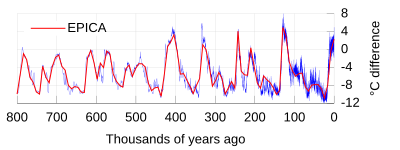A variety of measurements recently all suggest the same thing: after 2013 we will see a drop in solar activity , perhaps a large one.
Such drops are generally associated with a period of global cooling. The most famous such case being the Maunder Minimum, a 70-year period with virtually no sunspots from 1645 to 1715. Average temperatures in Europe sank so low during that period that it came to be known as "the Little Ice Age."
Is another little ice age coming? Or will global warming and decreased solar activity cancel each other out? (Could we be so lucky? It would be like a reprieve from God). Or will there be no noticeable effect as some climate scientists are predicting?
http://cosmiclog.msnbc.msn.com/_news/2011/06/14/6857473-solar-forecast-hints-at-a-big-chill
PS. Meanwhile, some people are also worried that the solar maximum we are headed for in 2013 may well cause major problems itself in the form of solar flares knocking out sensitive electronic equipment and possibly the entire power grid.
http://cosmiclog.msnbc.msn.com/_news/2010/06/24/4558109-solar-cycle-sparks-doomsday-buzz
Such drops are generally associated with a period of global cooling. The most famous such case being the Maunder Minimum, a 70-year period with virtually no sunspots from 1645 to 1715. Average temperatures in Europe sank so low during that period that it came to be known as "the Little Ice Age."
Is another little ice age coming? Or will global warming and decreased solar activity cancel each other out? (Could we be so lucky? It would be like a reprieve from God). Or will there be no noticeable effect as some climate scientists are predicting?
http://cosmiclog.msnbc.msn.com/_news/2011/06/14/6857473-solar-forecast-hints-at-a-big-chill
PS. Meanwhile, some people are also worried that the solar maximum we are headed for in 2013 may well cause major problems itself in the form of solar flares knocking out sensitive electronic equipment and possibly the entire power grid.
http://cosmiclog.msnbc.msn.com/_news/2010/06/24/4558109-solar-cycle-sparks-doomsday-buzz
Last edited:



